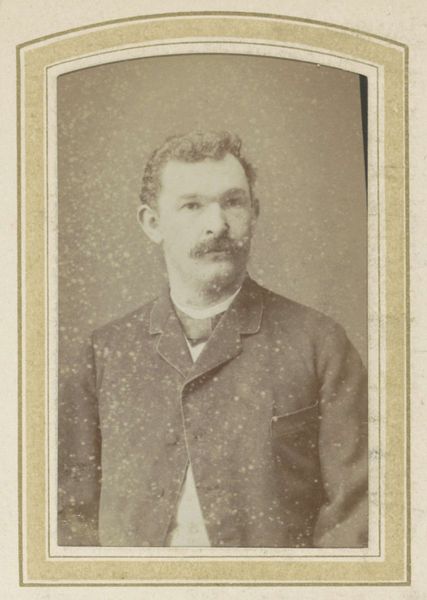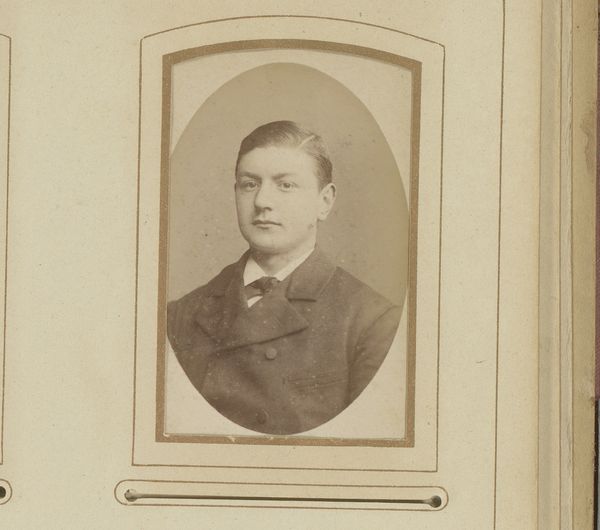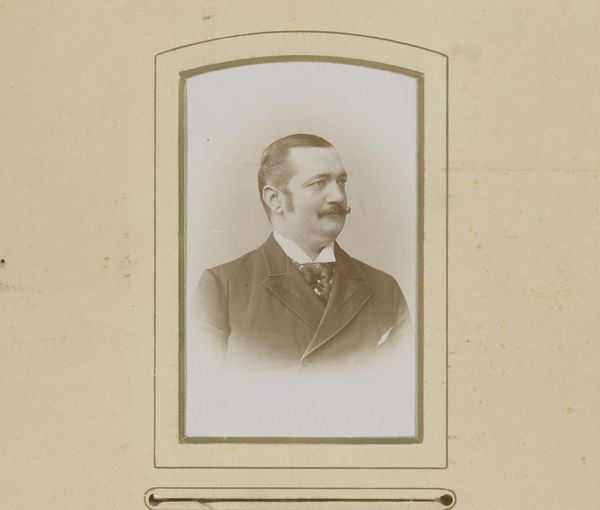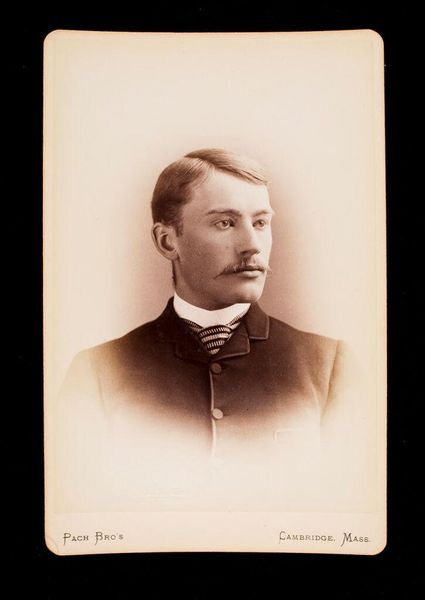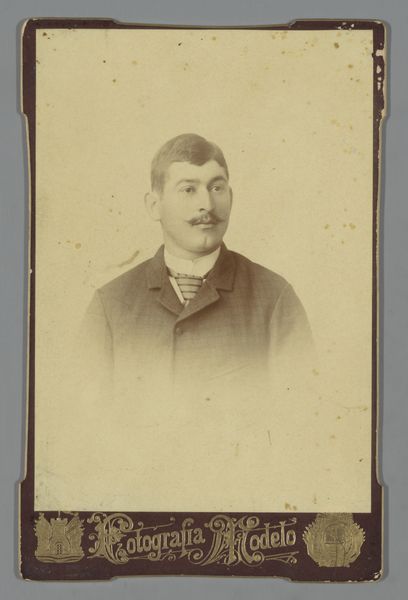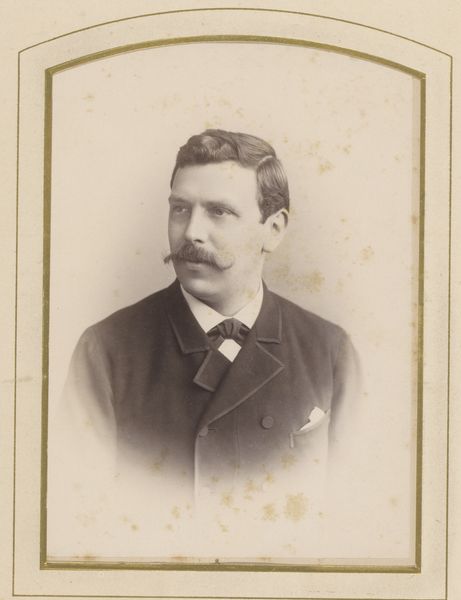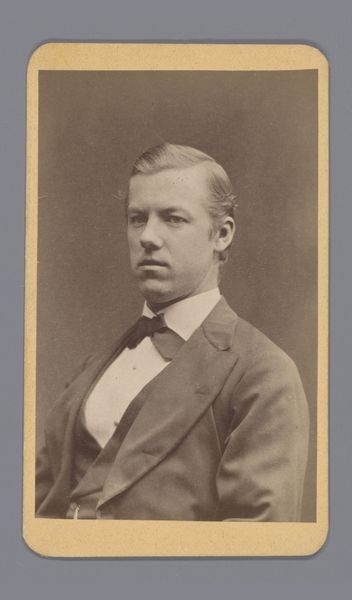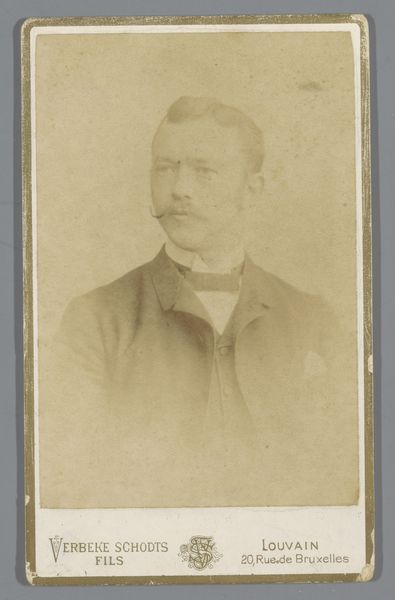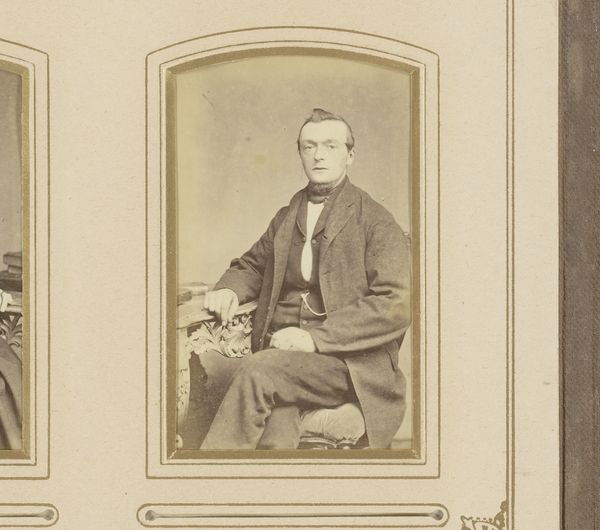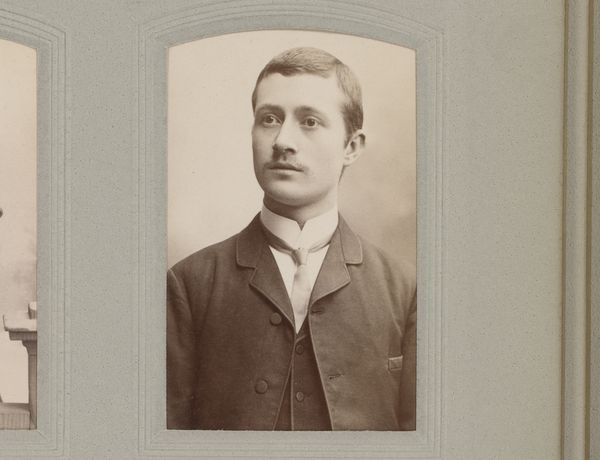
photography, gelatin-silver-print
#
portrait
#
photography
#
gelatin-silver-print
Dimensions: height 83 mm, width 51 mm
Copyright: Rijks Museum: Open Domain
Curator: So here we have “Portret van een zittende man met snor” or "Portrait of a seated man with mustache", a gelatin silver print dating somewhere between 1860 and 1900, and attributed to Gustaf Alfred Johanson Dahllöf. Editor: Mmm, my first impression? Serious! He looks like he knows exactly who he is and isn't afraid to show it, all buttoned up in his suit. Curator: Absolutely, and that kind of self-presentation is key. Think about the social and political landscape of that time. Men like him, presenting this very specific image of themselves, were constructing a particular narrative about masculinity and respectability. Editor: The suit, the carefully groomed mustache...it's all deliberate, isn’t it? Like he's saying, "I’ve arrived." Almost makes me wonder what he *really* thought of it all. You know, beyond the performance? Curator: Exactly. Photography in the late 19th century was increasingly accessible to the middle class, making portraiture less about aristocratic privilege and more about aspiring to a certain social status and, perhaps, contributing to this growing visual rhetoric that supported bourgeoise notions. Editor: It’s also the story he isn't telling, you know? What anxieties or hopes might be hidden beneath that impeccable mustache? Was he happy, tormented, deeply in love? We just don't know from looking at his stoic pose. Curator: And even his pose speaks volumes. The way he's seated, his arm casually resting—it's a carefully constructed image intended to project a specific sense of confidence and composure, mirroring wider societal structures where such representation bolstered prevailing patriarchal and class-based norms. Editor: True! It reminds me how tricky the stories we build around images can be. But I'm always drawn to the hidden stories, the spaces between what's shown and what's actually felt. Curator: A very good point—the real value is in acknowledging how those narratives reflect and reinforce historical power dynamics. It prompts us to consider what's gained and what's potentially lost in these visual constructions. Editor: Yeah. It really makes you wonder. It almost makes you want to travel in time and offer him a paint brush so that he can give free expression of who he really is!
Comments
No comments
Be the first to comment and join the conversation on the ultimate creative platform.

